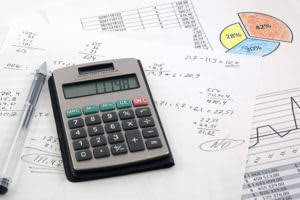18 Nov Depreciation Expenses: Definition, Methods, and Examples
Depreciation is then computed for all assets in the pool as a single calculation. One half of a full period’s depreciation is allowed in the acquisition period (and also in the final depreciation period if the life of the assets is a whole number of years). United States rules require a mid-quarter convention for per property if more than 40% of the acquisitions for the year are in the final quarter.
AccountingTools
- The same types of fixed assets of different entities might be charged the expenses differently.
- Recording depreciation has a direct and significant impact on a company’s financial statements, influencing profitability, asset valuation, and tax obligations.
- For example, a delivery truck experiences wear and tear, and a computer system becomes outdated.
- For instance, the IRS provides compliance guides on allocating depreciation costs of assets.
- In the case of intangible assets, the act of depreciation is called amortization.
At the end of three years the truck’s book value will be $40,000 ($70,000 minus $30,000). Unlike the account Depreciation Expense, the Accumulated Depreciation account is not closed at the end of each year. Instead, the balance in Accumulated Depreciation is carried forward to the next accounting period. After the truck has been used for two years, the account Accumulated Depreciation – Truck will have a credit balance of $20,000. After three years, Accumulated Depreciation – Truck will have a credit balance of $30,000. Each year the credit balance in this account will increase by $10,000 until the credit balance reaches $70,000.
Example 3: Manufacturing Equipment
The allocation of the cost of a plant asset to expense in an accelerated manner. This means that the amount of depreciation in the earlier years of an asset’s life is greater than the straight-line amount, but will be less in the later years. In total the amount of depreciation over the life of the asset will be the same as straight-line depreciation. The difference between accelerated and straight-line is the timing of the depreciation.
How to Record DD&A in Financial Statements
The depreciable amount is the cost of an asset, or other amount substituted for cost, less its residual value. In practice, it is an accounting technique used to allocate the cost of tangible assets to expense across periods in which the asset is used. This process recognizes that fixed assets contribute to revenue generation over multiple periods, and thus their cost should be spread over the periods benefited. Depreciation significantly affects a company’s financial statements, particularly the income statement and the balance sheet.
Balance Sheet Impact
This is the value an asset is projected to have when it is no longer useful to the business, whether through sale, retained earnings scrap, or trade-in. In some cases, the estimated salvage value might be zero, especially for assets that are expected to have no remaining market value. If the vehicle were to be sold and the sales price exceeded the depreciated value (net book value) then the excess would be considered a gain and subject to depreciation recapture. In addition, this gain above the depreciated value would be recognized as ordinary income by the tax office.
- Accounting guidance determines whether it’s correct to amortize or depreciate.
- Accumulated depreciation is a running total of depreciation expense for an asset that’s recorded on the balance sheet.
- Depreciation expenses can significantly influence various financial ratios.
- Recall that the asset’s book value declines each time that depreciation is credited to the related contra asset account Accumulated Depreciation.
- The assets normally treated as Fixed Assets are an office building or building belonging to the entity, land belonging to the entity, computer equipment, entity care, and others.
- This accounting process recognizes that physical assets, such as machinery or buildings, lose value due to wear and tear, obsolescence, or usage.
Fixed assets like buildings, vehicles, rental properties, commercial properties, and production equipment all decline over time. Depreciation is an accounting method used to calculate the decrease in value of a fixed asset while it’s used in a company’s revenue-generating operations. Assets naturally lose value due to usage, age, and depreciation expense meaning technological advancements. By accounting for this reduction, businesses can present a truer picture of the asset’s remaining value on their financial statements. This practice helps in financial planning, including decisions about asset replacement. Depreciation is a fundamental accounting practice that impacts a company’s financial health.
Related terms
Depreciation plays a pivotal role in accurately representing a company’s financial performance and tax liabilities. To calculate depreciation, businesses rely on three primary elements, each requiring careful estimation. The first element is the asset’s cost, which includes not only the purchase price but also all necessary expenditures to get the asset ready for its intended use. This can encompass shipping fees, installation charges, and any modifications required to make the asset operational. The amortization expense is calculated by dividing the historical cost QuickBooks Accountant of the intangible asset by the useful life assumption.
Depreciation Method
Subtract salvage value from asset cost to get the total value that this asset will provide you over its lifespan. This accumulation expense reduces the book value of property, plant, and equipment at the end of the charging period. If your financial statements are prepared based on IFRS, IAS 16 Property, Plant, and Equipment are the standard for dealing with depreciation. Most companies have multiple assets, any of which may be in a period of depreciation. Many businesses opt for a salvage value of zero as many assets are used until they are worn out, and technology equipment quickly becomes obsolete. Notice how the Accumulated Depreciation account lowers the total value of a company’s assets.







No Comments